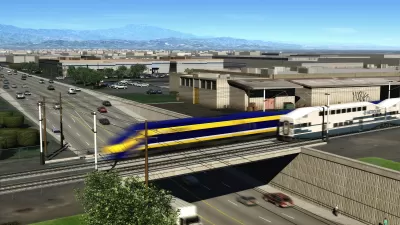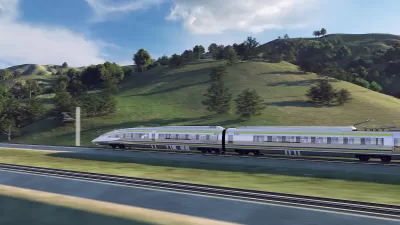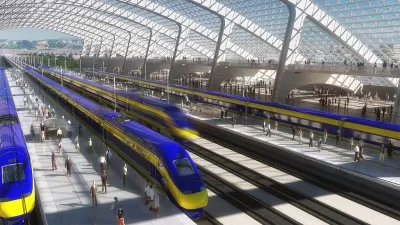The California High-Speed Rail Authority also certified the Final Environmental Impact Report/Environmental Impact Statement for the San Francisco to San Jose section of the route in August.

“The California High-Speed Rail Authority Board of Directors announced on Wednesday that they approved the continued construction of the network into both Merced and Bakersfield,” reports Evan Symon for California Globe.
Construction between Bakersfield and Merced is already underway, but the recent infusion of federal funding for the project, including $25 million in RAISE grant funding for the project in downtown Merced, made it easier for the California High-Speed Rail Authority to award two construction contracts for continued work.
“The Authority awarded the $41 million Merced to Madera extension design contract to Stantec Consulting Services Inc. which covers approximately 33.9 miles with 40 structures,” explains Symon. “The $44.9 million Fresno to Bakersfield (Locally Generated Alternative) extension contract was awarded to HNTB and covers approximately 18.5 miles between the cities of Shafter and Bakersfield in Kern County with 31 structures.”
In another big development for the project, the Authority also announced on August 18 that it had certified the Final Environmental Impact Report/Environmental Impact Statement for the San Francisco to San Jose section of the route. As reported by Dustin Gardiner for the San Francisco Chronicle [paywall], the approval of the Final EIR/EIS means that 400 miles of the planned 520-mile route have now been granted environmental clearance for construction.
The Authority is claiming that recent progress on the project could allow trains to operate in the state’s Central Valley by 2029.
FULL STORY: California High-Speed Rail Board Approves Construction of Lines into Bakersfield, Merced

Trump Administration Could Effectively End Housing Voucher Program
Federal officials are eyeing major cuts to the Section 8 program that helps millions of low-income households pay rent.

Planetizen Federal Action Tracker
A weekly monitor of how Trump’s orders and actions are impacting planners and planning in America.

Ken Jennings Launches Transit Web Series
The Jeopardy champ wants you to ride public transit.

Rebuilding Smarter: How LA County Is Guiding Fire-Ravaged Communities Toward Resilience
Los Angeles County is leading a coordinated effort to help fire-impacted communities rebuild with resilience by providing recovery resources, promoting fire-wise design, and aligning reconstruction with broader sustainability and climate goals.

When Borders Blur: Regional Collaboration in Action
As regional challenges outgrow city boundaries, “When Borders Blur” explores how cross-jurisdictional collaboration can drive smarter, more resilient urban planning, sharing real-world lessons from thriving partnerships across North America.

Philadelphia Is Expanding its Network of Roundabouts
Roundabouts are widely shown to decrease traffic speed, reduce congestion, and improve efficiency.
Urban Design for Planners 1: Software Tools
This six-course series explores essential urban design concepts using open source software and equips planners with the tools they need to participate fully in the urban design process.
Planning for Universal Design
Learn the tools for implementing Universal Design in planning regulations.
Ada County Highway District
Clanton & Associates, Inc.
Jessamine County Fiscal Court
Institute for Housing and Urban Development Studies (IHS)
City of Grandview
Harvard GSD Executive Education
Toledo-Lucas County Plan Commissions
Salt Lake City
NYU Wagner Graduate School of Public Service





























